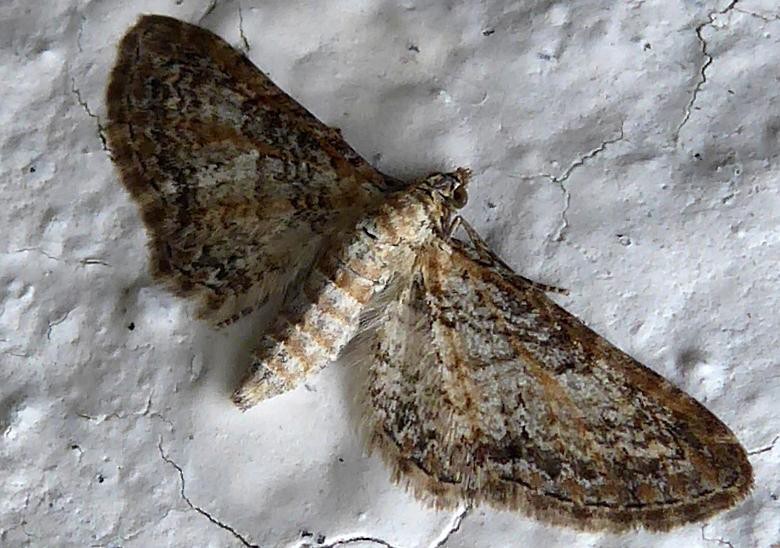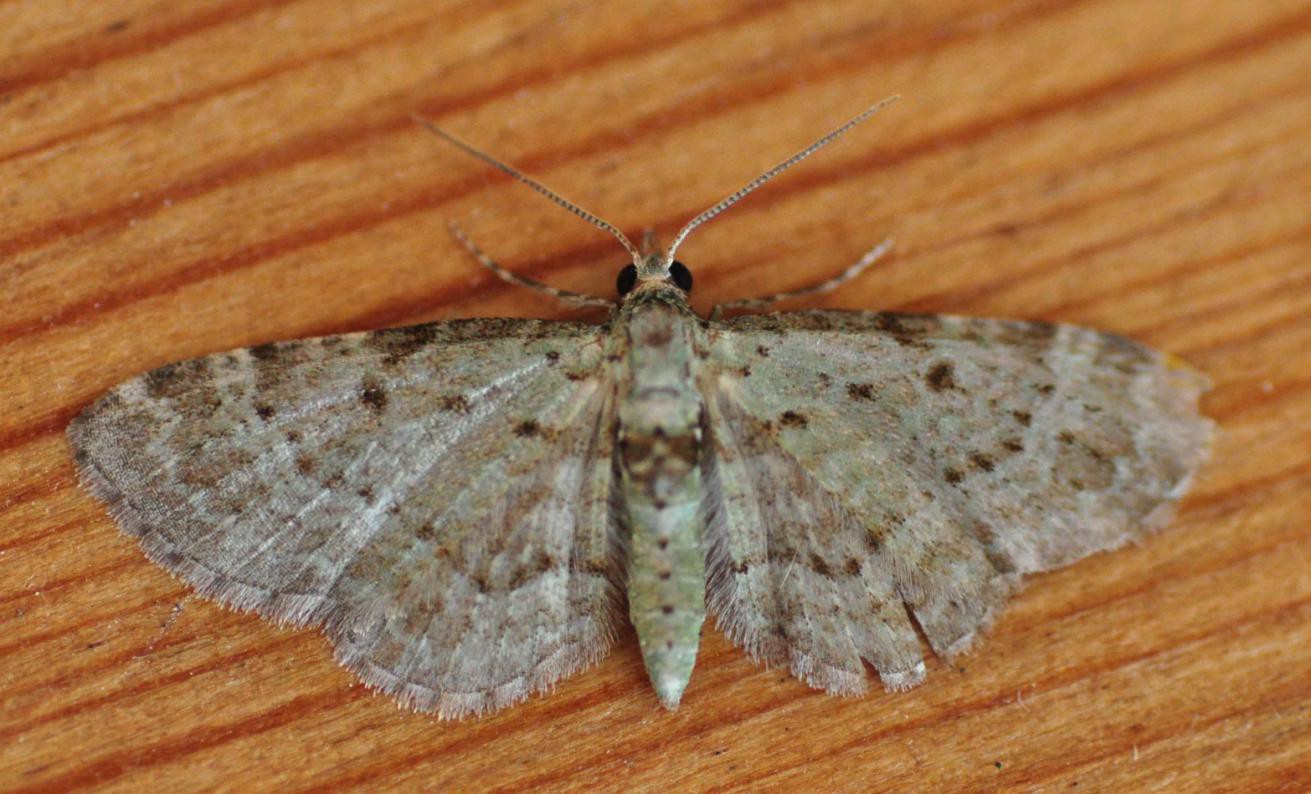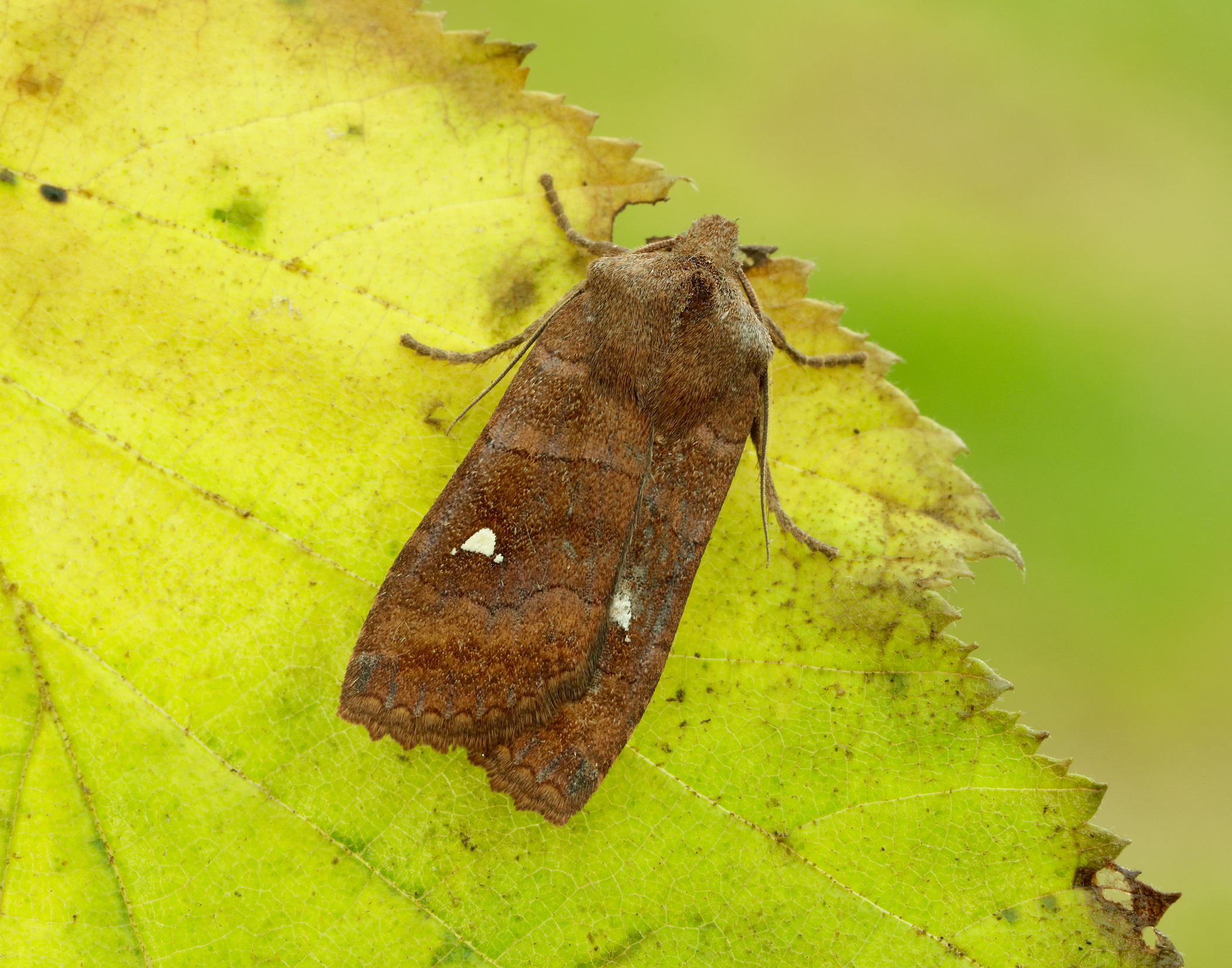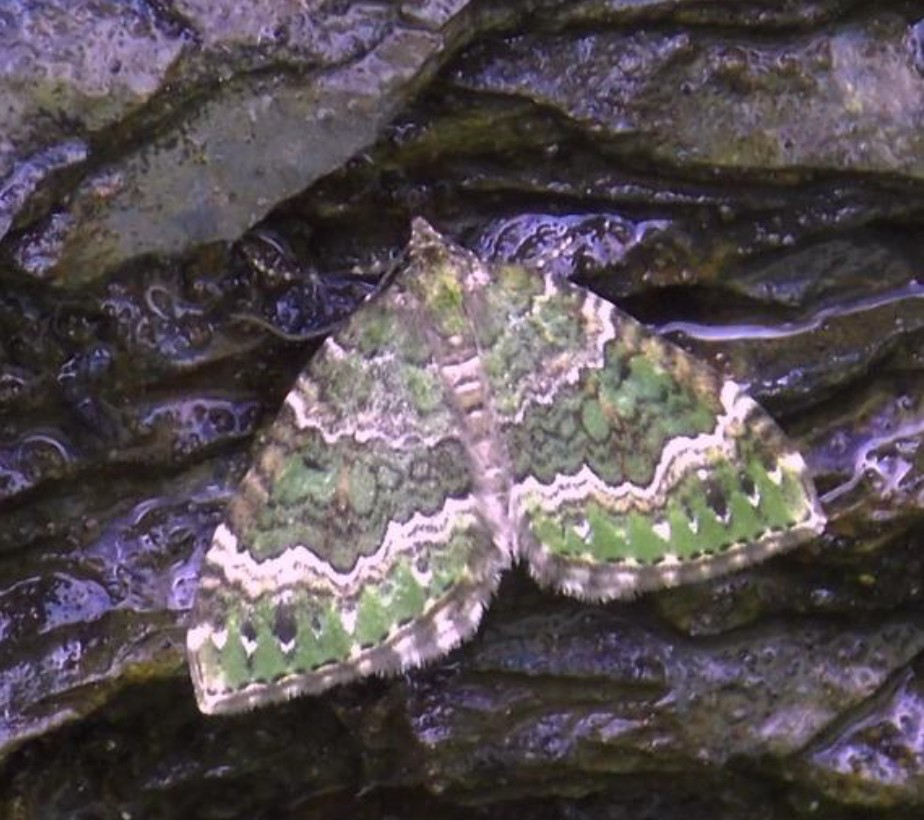This week there is a break with tradition by not only featuring three species (of uncommon pug moths) which are on the wing now but also looking at the range of pug species found in D&G. Of course each of them deserves to be a Moth of the Week and some may well achieve that eventually!

Thyme Pug is a very local and infrequent species in Scotland and mainly in the west. Most records in D&G are coastal where the food plant thyme grows in abundance. There is an inland record and this pug might prove to be more widespread if some of the patches of thyme in the uplands were searched, although many of them are in very inaccessible places. It can be found on the wing from the beginning of June until mid-August. Its characteristic features include size, grey wings (c. 20mm) with a pointed apex, a prominent elongated discal spot and dark spots along the costa.
This is the time of year when pug moth numbers increase as more and more species emerge. This is an intriguing group of geometrid moths which are closely related to the carpet moths and similar species. Most of the pugs belong to one genus Eupithecia and as a result are very similar and have gained a reputation of being difficult to identify. The features used to help separate these species include the size of the wingspan, the shape of leading wing edge, the width of the wings, the size, shape and boldness of the discal spot; the size and distribution of the white spots; the pattern of cross-bands; the presence of a dark band across abdomen; the resting position. The recent book Pug Moths of North-west England by Brian Hancock (2018) is a great help in identifying these moths. However worn and melanic forms may be impossible to name except by dissection of their genitalia. Generally a good photo of a fresh specimen can be identified and posting it on-line through the Pugs in Flight Tonight Facebook page or the Scottish Moths Yahoo site (you will have to sign up to these) can give you direct access to great expert opinion.
As geometers all pugs have ‘looper’ caterpillars and many of these have characteristic marks along their bodies which allows the identification at least of the later instars.
There are some 55 species of pugs, with a number of sub-species, in the UK and 35 of these occur in D&G. Of our pugs, 12 are rare and local with less than 20 records, 11 are uncommon (21 to 99 records) and the remaining third are common and widespread.
In detail our records show the rarest species are: the Sloe Pug a species recently colonising Scotland, 2 records; the Plain Pug a species feeding on waste-ground plants, only 1 record (2011) since one in 1870; the Cloaked Pug feeding on conifers, 1 recent (2012) and 2 old records; the Thyme Pug (see above) a very coastal species with 8 records; Freyer’s Pug which is a southern sub-species of the Edinburgh Pug associated with juniper and cypress which is spreading rapidly northwards and has 9 records. Also very uncommon are: the Netted Pug has 12 records and feeds on bladder campion; the Triple-spotted Pug also has 12 records, feeds on angelica but rarely comes to light; the Marsh Pug has 13 records but is a day-flying species feeding on mouse-ear; the Shaded Pug (see below) is a southern species feeding on various composite flower heads and has 13 records; the Ochreous Pug feeding on conifers with 14 records; the Bilberry Pug (see below) only known from two sites has 15 records; the Valerian Pug with 16 records. More widespread are: the Oak-tree Pug 21 records, the Angle-barred Pug 23, the Edinburgh Pug 32, the White-spotted Pug 41, the Slender Pug 45, the Satyr Pug 47, the Juniper Pug 50, the Dwarf Pug 60, the Larch Pug 76, the Golden-rod Pug 77, the Mottled Pug 90. Common and widespread are: the Lime-speck Pug 108; the Narrow-winged Pug 152; the Currant Pug 163; the Wormwood Pug 181; the Tawny Speckled Pug 237; the Grey Pug 239; the Green Pug 255; the Brindled Pug 258; the V-Pug 262; the Double-striped Pug 487; the Common Pug 519; the Foxglove Pug 563. We do have records of Haworth’s Pug, Maple Pug, Toadflax Pug, Marbled Pug, Bleached Pug, Campanula Pug and Bordered Pug but these are considered misidentifications. However, all, but the Campanula Pug, have been found nearby in Cumbria.

The base colour of Shaded Pug is chalky-white with darker outer edges to its wings (19-21mm) which have a very straight leading edge. The caterpillars feed on the flowers of composites such as hawkbits, scabious, ragwort, knapweed. However, in the UK the species is mainly found in the south-east often associated with lime-rich soils. It is found in scattered through parts of England but in Scotland is restricted to D&G and the west, north of the Central Belt. Here it could be more widespread along the coastal fringe.

This very distinctive Nationally Scarce Bilberry Pug belongs to a different genus than the majority of pugs (i.e. Pasiphila) and has broad wings (c. 20mm) with an arched leading edge and two rows of characteristically shaped spots. When fresh it is a pale lime-green (not showing very clearly on this photo) with a black central spot. As its name suggests, its caterpillar feeds on bilberry flowers, retreating to a shelter made from leaves held together with silk and often with amounts of dark frass. In the UK it is a species of the south and west and in Scotland it is very local and seems to be limited to D&G and areas around the west of Perthshire. It is on the wing from late June to August. In D&G it is limited to Kirkconnell Flow and one other nearby moss, in a habitat of dense mature Bilberry, often under trees. This habitat does occur elsewhere and it would be worth moth trapping around other mosses at this time of year to see if it is to be found elsewhere.
However, given that some pug moth rarities may be strays, others are spreading northwards, several are restricted by their relatively rare habitat, a few are not taken in moth traps and there is great scope for misidentification it is probable that we have a lot to learn about the distribution of these fascinating small moths.



